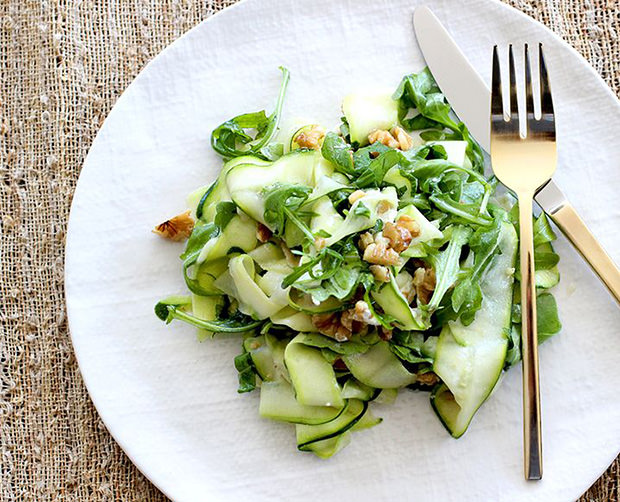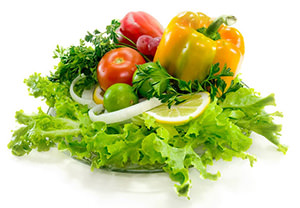
How To Stretch Your Carbohydrate Intake

Posted on 06 Feb, 2021
 Bulk it up, give body and balance, camouflage it, show it off, switch it up. Sound like a fashionista getting styling tips? They're actually simple techniques on how to stretch your carbohydrate intake.
Bulk it up, give body and balance, camouflage it, show it off, switch it up. Sound like a fashionista getting styling tips? They're actually simple techniques on how to stretch your carbohydrate intake.
Whether you're watching carbs to control your weight or you're trying to control your blood sugar and blood glucose levels, carbohydrates are an important part of good nutrition, but it's important not to eat too much at one time. So get the most mileage out of the carbs you can have.
[Related: The Best Carbs For Runners]
You can play tricks on your taste buds as well as your eyes by combining high-carb ingredients with the low-carb ones. You'll get all the satisfaction that comes from those high carbs without overdoing it. By mixing carbs, your dishes will pop with color, texture and flavor while getting more nutritional benefits because you're eating more fruits and veggies.
But it goes beyond mixing them up, it's how you mix them, how you cut them, even how you serve them. Check out some of these techniques:
- Increase the volume (and flavor) of rice, pasta or potato dishes by tossing in sauteed low-carb veggies, such as mushrooms, onions and garlic, or add some fresh quartered grape tomatoes and chopped green onion at the very end.
- Give substance to your salads by including small amounts of high-carb foods, such as garbanzo beans, edamame or even leftover cooked whole-grain pasta with your dark leafy lettuces.
- Trick your taste buds by cooking sweet potatoes with carrots (instead of just potatoes) to give the taste of potatoes, or try cooking cauliflower florets with rotini or penne to bulk up your pasta serving.
- How you cut bread or a vegetable can give you that feeling of "more." Thinly slice your portion of bread and get two or more pieces instead of one. Chunk up your vegetables rather than dicing them to give a hearty visual as well as a bigger bite.
- When it comes to appetizers and snacks, go beyond the chips and crackers by lightly spooning your spreads and salsas on rounds of cucumber, squash, plum tomatoes and endive. Or turn them into miniature wraps with spinach or small Bibb lettuce leaves.
- Incorporate vegetable "noodles" in a pasta dish by tossing in strips of raw zucchini in with the hot pasta. Make the ribbons by running a vegetable peeler lengthwise down the raw zucchini. Try thin strips of carrots or bell peppers: Simply pop them in the hot water with the pasta for the last 15 seconds.
Zucchini Ribbon Feta Pasta

(For full nutritional information, here is a link to the recipe we created in MyPlate.)
Prep Time: 12 minutes
Cook Time: 10 minutes
Serves: 4
Serving Size: 1 cup
Ingredients
- 1 medium zucchini
- 2 ounces whole-grain spaghetti noodles, broken in half
- 1 cup grape tomatoes, halved
- 1/4 cup finely chopped green onion
- 2 ounces slivered almonds
- 2 tablespoons chopped fresh dill
- 1 tablespoon grated lemon zest
- 1 tablespoon canola oil
- 1/2 medium garlic clove, minced
- 1/4 teaspoon salt
- 1/8 to 1/4 teaspoon dried pepper flakes, optional
- 2 1/2 ounces reduced-fat feta or reduced-fat blue cheese
Directions
- Using a vegetable peeler, cut the zucchini lengthwise into thin ribbons. Set aside.
- Cook pasta according to package directions, omitting any salt or fat. Add the zucchini during the last 15 seconds of cooking.
- Meanwhile, combine the remaining ingredients, except the cheese, in a large bowl.
- Drain the pasta, reserving two tablespoons of the pasta water. Shake off excess liquid. Add the pasta mixture and reserved tablespoons of water to the tomato mixture and toss until well blended. Add the cheese and toss gently.
Short list of high-carb veggies and grains (to keep in control):
 Potatoes
Potatoes- Kidney, lima, navy and garbanzo beans
- Green peas
- Edamame (soybeans)
- Beets
- Corn
- Butternut, acorn squash
- Pasta, preferably whole-grain or multi-grain versions
- Rice, preferably brown
- Other grains, such as quinoa, millet, oats, bulgur, barley, farro, wheatberries, breads
Short list of low-carb veggies (to help stretch those higher carbs):
 Artichokes
Artichokes- Asparagus
- Green beans
- Crookneck, zucchini squash
- Mushrooms
- Bell peppers, chili peppers
- Tomatoes
- Cauliflower
- Carrots
- Broccoli
- Spinach, kale, lettuces
- Cucumber
Readers -- Are you watching your carb intake? How do you try to stretch your carbs? Have you tried any of the suggestions mentioned above? What's your favorite low-carb recipe? Leave a comment below and let us know!
Nancy S. Hughes is a nationally recognized author and authoritative food consultant. She has written 16 nationally published cookbooks as well as developed recipes for 56 additional cookbooks with more than 6,000 published recipes to her credit. Her most recent book is Diabetes Carb Control Cookbook, published by the American Diabetes Association.
Visit her website and connect with her on Google+, YouTube and LinkedIn.
Great Books For Eating Healthy

by Michael Pollan

by Dr. Alejandro Junger

by Michael Greger

by Thug Kitchen
 How To Do The Perfect Plank
How To Do The Perfect Plank Different Types Of Fibre And Their Health Benefits
Different Types Of Fibre And Their Health Benefits Eating Tips To Increase Your Productivity
Eating Tips To Increase Your Productivity Should You Be Eating Sprouted Bread?
Should You Be Eating Sprouted Bread?










